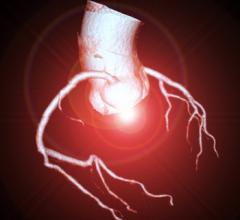
March 9, 2009 - The use of dual-source computed tomography (DSCT) may be useful to noninvasively detect in-stent restenosis, especially in stents with a relatively large diameter, according to a study in this week’s issue of the American Journal of Cardiology (pages 812-817).
The study was conducted by researchers from the Department of Internal Medicine, University of Erlangen-Nuremberg, Erlangen, Germany, the Institute of Diagnostic Radiology, University of Erlangen-Nuremberg, Erlangen, Germany, and the Cardiac MR PET CT Program, Massachusetts General Hospital and Harvard Medical School, Boston. The assessed the accuracy of evaluating coronary artery stents using DSCT, because it provides higher temporal resolution that may allow more accurate evaluation of coronary stents. A total of 112 patients with 150 previously implanted coronary stents (diameter ?3 mm) were examined using a Definition DSCT made by Siemens Medical Solutions before conventional coronary angiography.
Each stent was classified as assessable or not assessable. All assessable stents were further classified for the absence or presence of in-stent restenosis (>50% diameter reduction) using DSCT, and results were compared with those using quantitative coronary angiography. Mean stent diameter was 3.27 ± 0.35 mm. Fifteen of 80 stents (19%) with a diameter of 3.0 mm were not assessable, and all 70 stents >3.0 mm were assessable. DSCT correctly identified 16 of 19 in-stent restenoses in 135 assessable stents, as well as the absence of in-stent restenosis in 110 of 116 stents (sensitivity 84%, specificity 95%, positive predictive value 73%, and negative predictive value 97% in assessable stents).
For more information: www.ajconline.org/article/S0002-9149%2808%2902091-2/abstract


 January 09, 2026
January 09, 2026 









